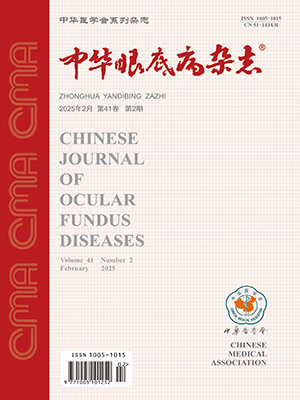| 1. |
Mittler R. ROS are good[J]. Trends Plant Sci, 2017, 22(1): 11-19. DOI: 10.1016/j.tplants.2016.08.002.
|
| 2. |
Morozumi Y, Ino R, Takaku M, et al. Human PSF concentrates DNA and stimulates duplex capture in DMC1-mediated homologous pairing[J]. Nucleic Acids Res, 2012, 40(7): 3031-3041. DOI: 10.1093/nar/gkr1229.
|
| 3. |
Dong L, Zhang X, Fu X, et al. PTB-associated splicing factor (PSF) functions as a repressor of STAT6-mediated Ig epsilon gene transcription by recruitment of HDAC1[J]. J Biol Chem, 2011, 286(5): 3451-3459. DOI: 10.1074/jbc.M110.168377.
|
| 4. |
Xu T, Liu S, Ma T, et al. Aldehyde dehydrogenase 2 protects against oxidative stress associated with pulmonary arterial hypertension[J]. Redox Biol, 2017, 11: 286-296. DOI: 10.1016/j.redox.2016.12.019.
|
| 5. |
Iwami H, Pruessner J, Shiraki K, et al. Protective effect of a laser-induced sub-lethal temperature rise on RPE cells from oxidative stress[J]. Exp Eye Res, 2014, 124: 37-47. DOI: 10.1016/j.exer.2014.04.014.
|
| 6. |
Teng H, Hong Y, Cao J, et al. Senescence marker protein30 protects lens epithelial cells against oxidative damage by restoring mitochondrial function[J]. Bioengineered, 2022, 13(5): 12955-12971. DOI: 10.1080/21655979.2022.2079270.
|
| 7. |
Dong L, Nian H, Shao Y, et al. PTB-associated splicing factor inhibits IGF-1-induced VEGF upregulation in a mouse model of oxygen-induced retinopathy[J]. Cell Tissue Res, 2015, 360(2): 233-243. DOI: 10.1007/s00441-014-2104-5.
|
| 8. |
Kim YM, Kim SJ, Tatsunami R, et al. ROS-induced ROS release orchestrated by Nox4, Nox2, and mitochondria in VEGF signaling and angiogenesis[J]. Am J Physiol Cell Physiol, 2017, 312(6): C749-C764. DOI: 10.1152/ajpcell.00346.2016.
|
| 9. |
徐嫚鸿, 王林妮, 林婷婷, 等. 多聚嘧啶序列结合蛋白相关剪接因子对缺氧诱导人视网膜微血管内皮细胞功能的影响[J]. 中华眼底病杂志, 2020, 36(2): 135-142. DOI: 10.3760/cma.j.issn.1005-1015.2020.02.010.Xu MH, Wang LN, Lin TT, et al. Effect of polypyrimidine sequence-binding protein-associated splicing factors on hypoxia-induced function of human retinal microvascular endothelial cells[J]. Chin J Fundus Dis, 2020, 36(2): 135-142. DOI: 10.3760/cma.j.issn.1005-1015.2020.02.010.
|
| 10. |
Bellezza I, Giambanco I, Minelli A, et al. Nrf2-Keap1 signaling in oxidative and reductive stress[J]. Biochim Biophys Acta Mol Cell Res, 2018, 1865(5): 721-733. DOI: 10.1016/j.bbamcr.2018.02.010.
|
| 11. |
Chen J, Wang L, Chen Y, et al. Phosphatidylinositol 3 kinase pathway and 4-hydroxy-2-nonenal-induced oxidative injury in the RPE[J]. Invest Ophthalmol Vis Sci, 2009, 50(2): 936-942. DOI: 10.1167/iovs.08-2439.
|
| 12. |
Zakaria A, Rady M, Mahran L, et al. Pioglitazone attenuates lipopolysaccharide-induced oxidative stress, dopaminergic neuronal loss and neurobehavioral impairment by activating Nrf2/ARE/HO-1[J]. Neurochem Res, 2019, 44: 2856-2868. DOI: 10.1007/s11064-019-02907-0.
|
| 13. |
Sun X, Chen L, He Z. PI3K/Akt-Nrf2 and anti-inflammation effect of macrolides in chronic obstructive pulmonary disease[J]. Curr Drug Metab, 2019, 20(4): 301-304. DOI: 10.2174/1389200220666190227224748.
|
| 14. |
Wen Z, Hou W, Wu W, et al. 6'-O-galloylpaeoniflorin attenuates cerebral ischemia reperfusion-induced neuroinflammation and oxidative stress via PI3K/Akt/Nrf2 activation[J/OL]. Oxid Med Cell Longev, 2018, 2018: 8678267[2018-03-25]. https://europepmc.org/article/MED/29765506. DOI:10.1155/2018/8678267.
|
| 15. |
Wang L, Chen Y, Sternberg P, et al. Essential roles of the PI3 kinase/Akt pathway in regulating Nrf2-dependent antioxidant functions in the RPE[J]. Invest Ophthalmol Vis Sci, 2008, 49(4): 1671-1678. DOI 10.1167/iovs.07-1099.
|




